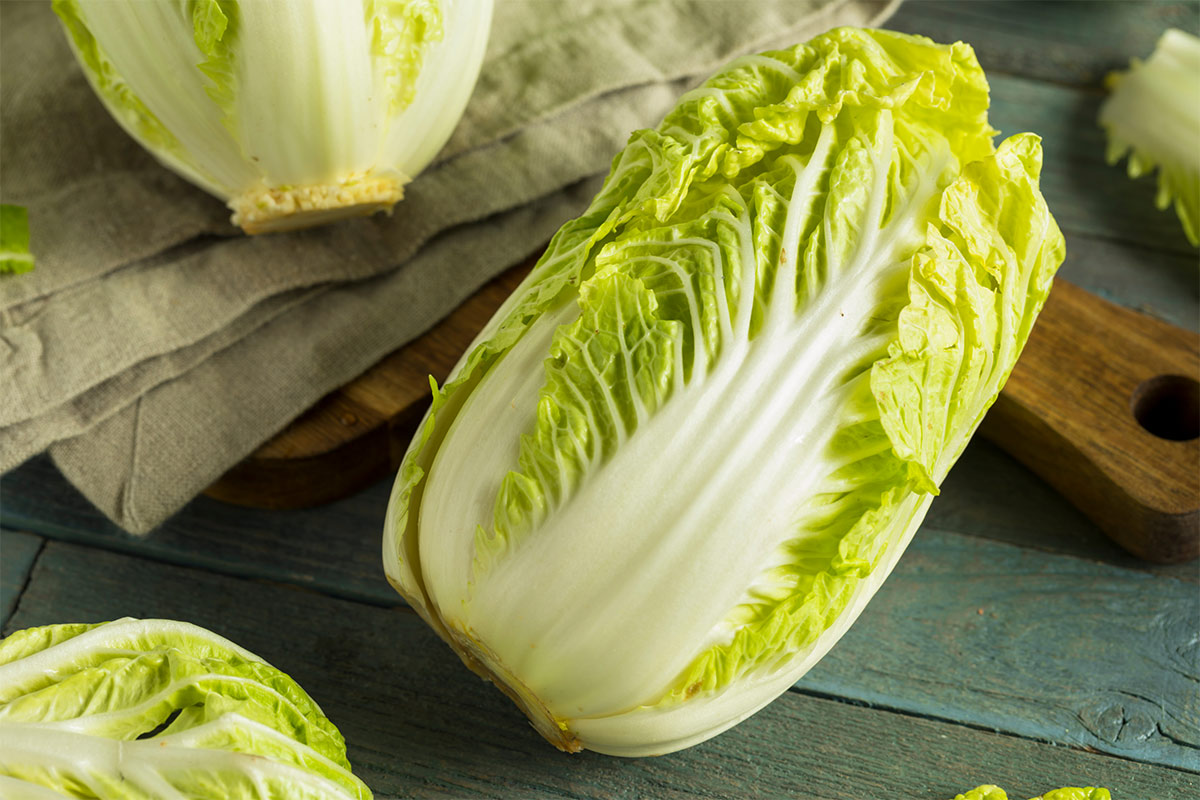19 Vegetables That Start With N (2024 edition)
Want to try new veggies? Have you ever explored vegetables that start with N? Now is your chance!
I thought I knew many vegetables until I stumbled upon a strange root veggie at the Asian market. It was knobby and gnarly, and I couldn’t resist taking it home to experiment with.
That modest vegetable opened my eyes to new tastes and textures. I realized that I hadn’t tried many veggies, including several that start with N.
Can you guess what kind of veggie that was? It was nagaimo! If I caught your attention with this one, go to #3 for more info!
If you appreciate trying new foods like me, you’ll adore these lesser-known yet tasty N-starting vegetables.
This article lays out a comprehensive list of 19 culinary veggies that start with N for you to enjoy. They provide nutrition, taste, and a balanced diet.
By culinary, I mean you can actually eat them. So I’ve only included veggies that you can prepare and eat as part of a meal.
Without further ado, let’s get to the list!

Want to Save This Post?
Enter your email & we’ll send it to your inbox. Plus, get great new recipes from us every week!
By submitting this form, you consent to receive emails from Hurry the Food Up.
Here are 19 names of vegetables that start with N and some info on each!
There are different types of vegetables from various parts of the world. Let’s take a look:
Naga Jolokia pepper
Native to northeastern India, the ghost pepper is incredibly hot. It has a vivid red color and a strong, smokey taste. The world’s hottest pepper, Naga Jolokia, contains capsaicin, which may reduce pain and inflammation.
Naga Jolokia pepper is a hybrid of the Capsicum chinense and Capsicum frutescens species.
Naga Morich pepper
A highly fiery chili pepper from Bangladesh and northeastern India. Its beautiful red color and fruity, powerful heat are used in curries, pickles, and other spicy meals. One of the world’s hottest pepper, Naga Morich, contains vitamins and antioxidants which provide many health benefits.
Naga Morich pepper belongs to the Capsicum chinense species.
Nagaimo yam

Nagaimo, also known as Chinese yam, is a popular ingredient in Asian cuisine. Long and cylindrical, it has thin, brownish skin. The raw vegetable has white, crispy flesh. Cooking makes it squishy and slimy like okra.
Nagaimo can be grated and used to produce a starchy paste for traditional Japanese soups, stews, and stir fry recipes. It’s a good source of vitamin C, potassium, and dietary fiber.
Nagaimo is scientifically known as Dioscorea opposita var. esculenta.
Nanohana


Nanohana is a popular vegetable in Japanese cuisine. Rapeseed or canola greens are the young leaves and stems of the plant that generates canola oil.
Nanohana, gathered in early spring, has a harsh, nutty flavor. The greens are blanched and served with a soy sauce dressing or in stir-fries and salads. Nanohana has vitamins C and K, and fiber, making it a nutritious supplement to a healthy diet.
Nanohana comes from the Brassica napus plant.
Nantes carrot
Nantes carrots have a sweet, crisp texture and are popular in European recipes. Soups, salads, and stews benefit from their fresh, slightly sweet flavor. Nantes carrots are high in beta-carotene and other essential vitamins.
The scientific name of the Nantes carrot is Daucus carota var. sativus.
Napa cabbage


Eastern Asian countries are known for incorporating Napa cabbage in various dishes. The common name of this veggie is Chinese cabbage.
Napa cabbage can be eaten fresh in salads or cooked in stir-fries, soups, or stews. It’s an excellent source of vitamin C, K, and fiber.
This type of cabbage goes by the scientific name Brassica rapa var. pekinensis.
Napa cabbage also makes a great substitute for bok choy and an alternative to endive in your salad recipes and stir-fries.
Napini kale
Napini kale is a cool season leafy vegetable. The word ‘napini’ refers to the stems, leaves and flowers of the bolting plant.
Salads, soups, and other recipes employ its dark green leaves and somewhat bitter, peppery taste. Vitamins and minerals in napini may reduce inflammation and enhance heart health.
Napini is produced from Brassica oleracea var. acephala.
Napoli tomatoes
San Marzano tomatoes, also known as Napoli tomatoes, are plum tomatoes cultivated in Campania, Italy, in San Marzano sul Sarno. Chefs worldwide utilize sweet, rich Napoli tomatoes in sauces, soups, and other foods.
Italian and foreign supermarket shops sell them canned. Due to their low acidity, meaty texture, and powerful taste, Napoli tomatoes are ideal for tomato sauce.
Napoli tomatoes are part of the species Solanum lycopersicum.
Nasturtium


Nasturtium leaves and blossoms are delicious and have a spicy, somewhat sweet taste. They add vitamin C and other nutrients to salads, sandwiches, and garnishes.
The scientific name of Nasturtium is Tropaeolum majus.
Navy beans
American cuisine uses little, white navy beans. Soups, stews, and baked bean dishes use them for their mild flavor and creamy texture. Vegetarians and vegans often benefit from navy beans’ protein, fiber, iron, and other minerals.
Navy beans are a variety of Phaseolus vulgaris.
Neeps
Turnips are called neeps in Scotland. These root vegetables are boiled or mashed and have a little sweet, earthy taste and crisp texture.
Neeps are rich in vitamins and minerals, particularly vitamin C. They’re often used in stews and other dishes.
Neeps are botanically classified as Brassica rapa rapifera.
If you need turnips for a particular recipe but don’t have any on hand, my guide to turnip alternatives can help you out.
Nettles


These weeds are edible and medicinal. They can be cooked like spinach or used in teas and tinctures. Vitamin- and mineral-rich stinging nettles are used to treat allergies and other health issues.
Nettles contain calcium, iron, and potassium that may support bone health, blood pressure, and more.
The botanical name of nettles is Urtica dioica.
New Zealand spinach
A leafy green vegetable from New Zealand and Australia. It tastes like spinach but grows better in warmer regions. New Zealand spinach is very nutritious and can be eaten in salads, sandwiches, and cooked foods.
The botanical name of New Zealand spinach is Tetragonia tetragonioides.
New Zealand yam
Native to South America, New Zealand yam, also known as oca or Oxalis tuberosa, is farmed worldwide. Salads, stir-fries, and other meals employ this sweet, nutty vegetable.
New Zealand yam is a popular alternative to potatoes and is a great source of vitamins, minerals, and fiber.
New potatoes
I love these potatoes! New potatoes, also called baby potatoes, are planted and harvested early. These small, waxy potatoes are tasty boiled, steamed, or roasted. New potatoes are super nutritious vegetables that make a healthy option for potato recipes.
The taste doesn’t get much better in my opinion, especially with a little butter and salt!
The botanical name of new potatoes is Solanum tuberosum.
Nigella (also called black onion seed)


Middle Eastern and Indian cuisine use this little black seed, also known as black onion seed or black cumin.
It can be used in curries, breads, and salads as a nutty spice with a bitter taste. Nigella seeds contain antioxidants and other nutrients and may reduce inflammation and improve digestion.
The Nigella plant’s botanical name is Nigella sativa.
Nopales (cactus pads)
Mexican cuisine relies on nopales, prickly pear cactus pads. Tacos, salads, and stews employ these chewy, tart vegetables. Nopales include dietary fiber, vitamin C, and other nutrients and may regulate blood sugar.
Nopales often come from the species Opuntia ficus-indica.
Nori


Japanese sushi and rolls employ nori, a form of edible seaweed. Before usage, it is roasted or dried and has a dark green, papery texture. Iodine, protein, and other nutrients found in nori may help thyroid function and digestion.
Nori is an acquired taste, but it adds a salty and slightly sweet flavor to dishes and even makes a great snack in the form of chips.
Nori is made from Porphyra species, including Porphyra yezoensis, P. tenera, and P. umbilicalis.
Numex chile peppers
Tex-Mex and Mexican cuisine feature mild Numex chile peppers. They’re wonderful for spicy food haters because they’re sweet and fruity with minimal heat. Numex chili peppers provide vitamin C and other nutrients in salsas, sauces, and other foods.
Numex chile peppers in scientific terms are Capsicum annuum.
From nutrient-rich napa cabbage to knobby nagaimo, uncover the diverse world of vegetables that start with N. Explore recipes, health benefits, and more.
- Naga Jolokia pepper
- Naga Morich pepper
- Nagaimo yam
- Nanohana
- Nantes carrot
- Napa cabbage
- Napini kale
- Napoli tomatoes
- Nasturtium
- Navy beans
- Neeps
- Nettles
- New Zealand spinach
- New Zealand yam
- New potatoes
- Nigella
- Nopales
- Nori
- Numex chile peppers
This list of vegetables beginning with the letter N can be a great way to try new healthy foods and broaden your veggie horizons. There is a wide variety to pick from, from peculiar-tasting nagaimo to sweet and crisp napa cabbage.
But that’s not all; why not check out a full list of fruits beginning with the letter N, such as nectarine fruit or nashi pear?
Also, if you’re in the mood for something out of the ordinary, you can try some N foods like nasi goreng or nettle soup.
Join me in unleashing your inner chef and explore the wide range of delicious N dishes!

